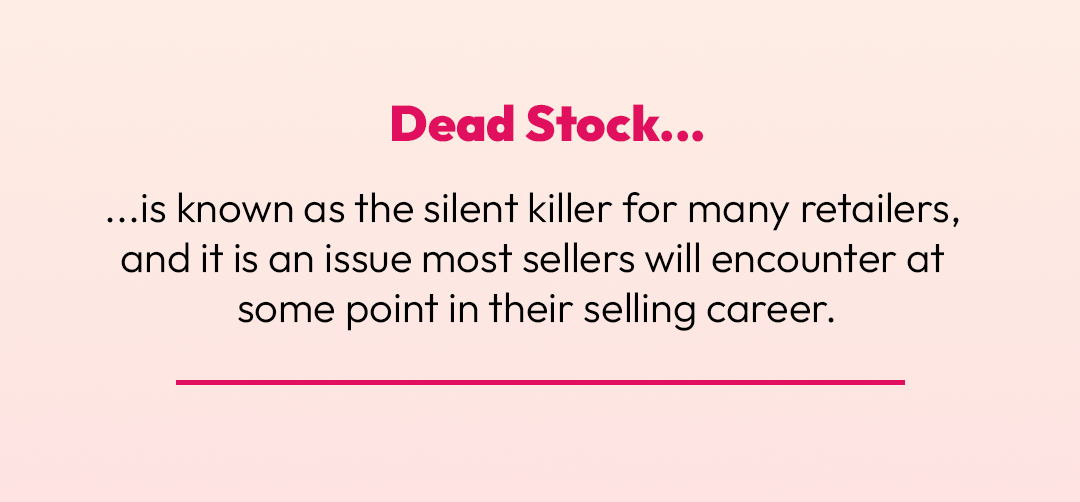Deadstock is inventory that is extremely slow to sell or does not sell at all, taking up shelf space, and incurring storage fees and losses. Deadstock is usually caused by poor purchasing decisions based on inadequate product research.

Keeping deadstock means having less space and mobility to introduce more profitable products. Furthermore, capital held in deadstock will also most probably reduce your returns.
No crystal ball can guarantee that sellers will avoid deadstock. Still, there are certain smart approaches and actionable data you can use to reduce, if not completely eliminate deadstock.
Here are several intelligent ways and actionable data that you can use to reduce, if not eliminate, deadstock.
- Examine why it isn’t selling: Is your product available at a lower price in other stores? Are your prices, text, and pictures helpful, transparent, and easy to understand? The first step in determining why a product has gone into deadstock status is to examine how you promote the product.
- Know when to call it quits: Just because you have deadstock that isn’t moving doesn’t mean the end is near. Some of the most successful vendors understand when to cut their losses and abandon a product that isn’t selling. Yes, it is painful. It’s difficult to realize you’ve invested so much money in an immovable product. It’s critical to learn from your purchasing blunders and move on, but this time with a more informed and knowledgeable perspective.
- Check your buyback agreement with the manufacturer: Manufacturers frequently offer a buyback option if a product does not sell. After all, they want to know that they can provide vendors with high-quality, portable goods.
- Deadstock markdowns and bundle deals: Who doesn’t like a good deal? Consider combining a slow-moving product with a higher-performing product. This is a clever and practical way to prevent a slow-moving commodity from becoming a deadstock.
- Stick to the data rather than your gut: data offers vendors a strong platform to base their purchasing decisions on. This will significantly reduce the likelihood of deadstock. Sellers frequently make the mistake of becoming emotionally invested in the things they offer and selecting products based on a hunch or a trend. While this may be profitable for a small (and fortunate) number of vendors, it is not for the majority.
- Act on data about deadstock: At the end of the day, the only efficient method to deal with deadstock is to try to avoid it in the first place. Projections can be backed up by data-driven judgments using technologies like Esopos.
Conclusion
If you invest in a competent inventory software system like Esopos, deadstock will not be a concern for your business. Esopos provides reports and tracks the performance of your SKUs, allowing you to spot problems promptly.
You can also say goodbye to unexpected discoveries of dead or “dying” stock, reducing the likelihood of those items occupying valuable storage space. Esopos will also lower the margin of error and boost overall efficiency.
